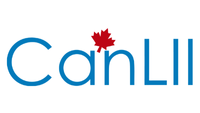https://link.springer.com/article/10.1007%2Fs10660-015-9186-3
This article discusses the legal requirements which must be taken into account in providing public online services to individuals with a low level of literacy. It will focus on two aspects: the accessibility and usability of these services. The authors propose a twofold theoretical analysis based on two issues raised by government objectives for improving G2C relations. The first one relates to the accessibility of online public services. This concept is not totally unknown in law, particularly regarding the rights of people with physical or cognitive functional disabilities or limitations. It is nonetheless greatly enriched by the peculiarities of the electronic context, as its scope includes circumstantial constraints, among others, imposed by the software or hardware environment. The authors demonstrate that the legal provisions and the standards promoted to frame the deployment of the immaterial relationship with citizens reflect this expanded vision of accessibility. As a result, by choosing a communication tool that implies minimum reading and comprehension skills, the implementation of these provisions and standards should plainly reflect this vision of accessibility by taking factors such as literacy levels into consideration. Secondly, as usability is a corollary to accessibility, the authors suggest that the strategies supporting the penetration of online public services consider the strong appeals from the private sector and, arguably, feedback from individuals themselves with regard to identification and authentication, which are a prerequisite for the use of these services. Consent to the collection, use or disclosure of personal information is another requirement. Beyond mere compliance with legal obligations, one should consider the conclusions and recommendations of the latest Five-Year Report of the Commission d’accès à l’information du Québec (Quebec access to information commission, hereinafter the “Access Commission”) that introduced the use of pictograms, among other proposals, as an avenue to promote the usability of online public services. In this context, designing the process or formalities for disclosure and consent could take into account the situation of people with low literacy levels and, consequently, be accessible to a significant fringe of the population, in addition to being a model for companies as part of their e-commerce process.








